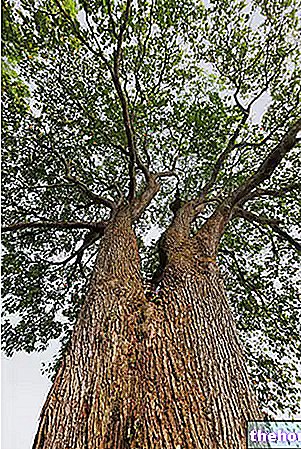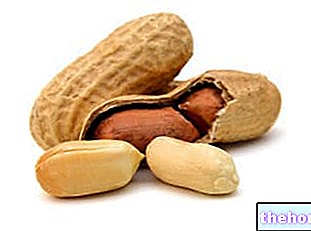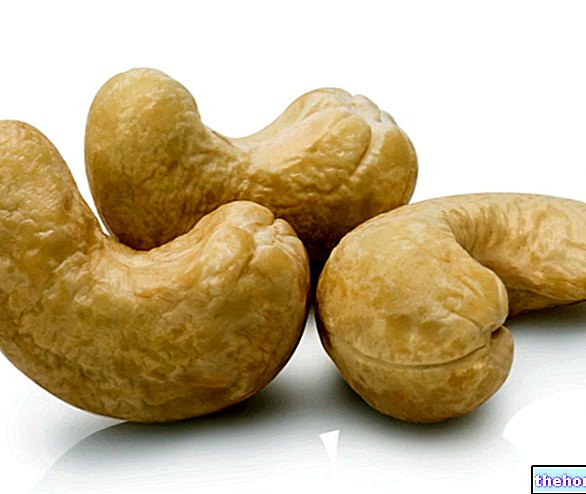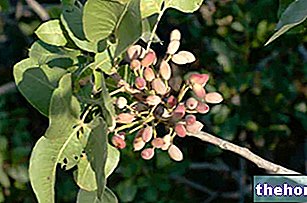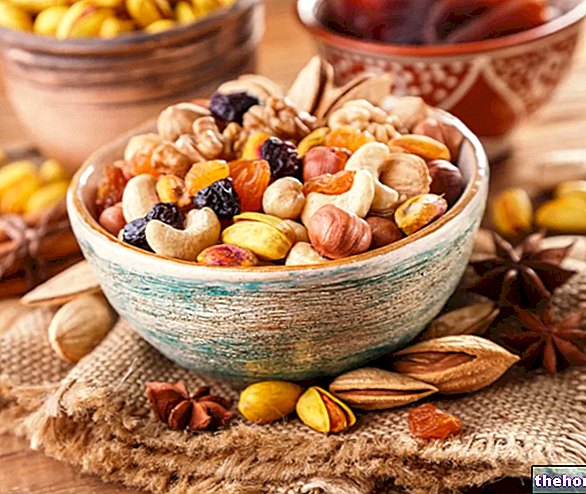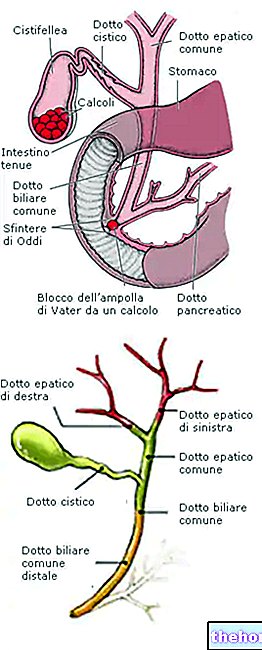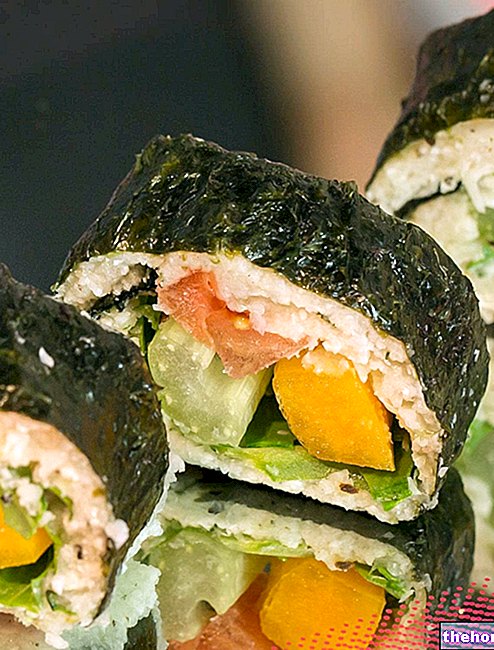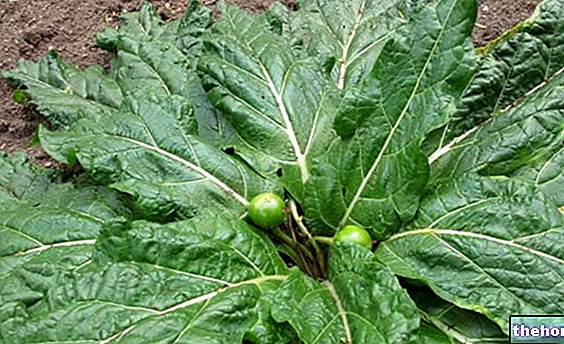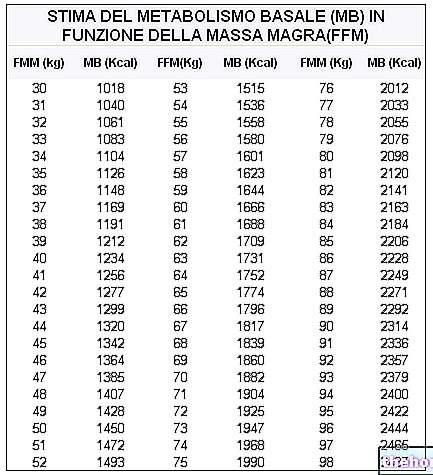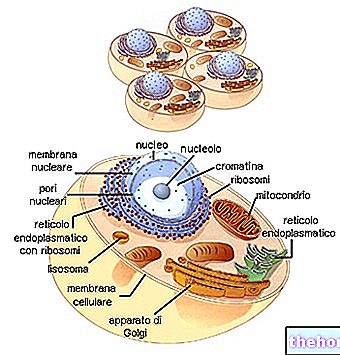General and Description
Macadamia is a genus of plants native to the Australian continent, more precisely to the New South Welsh (state of Australia located in the south-eastern part of the country).
Belonging to the Proteaceae family, the Macadamia genus has four species of plants that produce edible seeds (called macadamia nuts), respectively: Macadamia integrifolia, Macadamia jansenii, Macadamia ternifolia And Macadamia tetraphylla.

In the English language, macadamia nuts are known as: queensland nut, bush nut, maroochi nut, bauple nut and Hawaii nut (in Aboriginal bauple, gyndl, jindilli, and boombera).
The four Macadamia species are quite different from each other. They show themselves as small or large evergreen trees, with a height between 2 and 12m.

Macadamia flowers are organized in a simple, long (5-30cm) and thin raceme; the flowers are 10-15mm long, white or pink or purple, with four petals.
Macadamia fruit is a globose follicle with pointed apex, hard and woody consistency, containing one or two edible seeds for humans.
Nutritional Characteristics
Macadamia nuts are plant-based foods that do not fall into the classification of the seven basic groups. However, due to their nutritional characteristics, the most similar set is that of seasoning fats and oils (Group V).

Nutritional values (per 100 g of edible portion)
Macadamia nuts have a very high energy intake which, quantitatively speaking, is comparable to that of butter. These calories are mainly supplied by fat, followed by modest amounts of protein and carbohydrates; compared to other more common edible seeds, such as almonds and walnuts, they are richer in lipids and contain fewer peptides and carbohydrates.
The fatty acids of macadamia nuts are mainly unsaturated, more precisely monounsaturated; proteins are of medium biological value and complex carbohydrates; they do not bring cholesterol and fiber is quite abundant.
Macadamia nuts boast the highest concentration of monounsaturated fatty acids among all the seeds known to date; they contain 22% of the "omega-7 palmitoleic acid, which has biological effects similar to those of "oleic acid (also monounsaturated, typical of extra virgin olive oil).
Among the mineral salts there are good concentrations of potassium, phosphorus, magnesium, calcium, iron, zinc, copper and selenium. As for vitamins, the levels of thiamine (vit B1) and niacin (vit PP) stand out.
Macadamia nuts are foods to be consumed in moderation in any nutritional regimen and should be avoided if you are overweight. If you want to insert them anyway, they should be used instead of the oil for seasoning in a 1: 1 ratio.
As far as metabolic impact is concerned, macadamia nuts do not have any undesirable effects. On the contrary, the specific breakdown of fatty acids is considered beneficial and, if used in the right way, could help reduce the percentage of overall saturates in the diet; it is however good to keep in mind that, in the Mediterranean diet, thanks to the use of extra virgin olive oil (rich in monounsaturated fatty acids), the use of macadamia nuts would not cause any compositional improvement.
Macadamia nuts are suitable for vegetarians, vegans, raw foods and do not conflict with any kind of religion. They are considered gluten free (gluten free) and as such are included in the celiac's diet; being lactose-free, they can also be eaten by those suffering from this pathology.
In case of severe diverticulosis, with a relative tendency to diverticulitis, it is better to avoid them or consume them sporadically, taking care to chew very carefully.
The average serving of macadamia nuts is around 5-10g per day.
TASTE
The flavor of macadamia nuts is indicated as rich and sophisticated, with sweetish and in any case pleasant hints. In the territories of origin, roasted and salted macadamia nuts are also widespread, as well as the butter obtained from them.
Poisonous Macadamia for Dogs
Macadamia nuts are toxic to dogs.
Within 12 hours of ingestion, in these animals, macadamia nuts cause a form of toxicosis characterized by weakness and paralysis of the hind limbs, associated with the inability to stand and walk.
Depending on the amount of nuts ingested and the size of the dog, symptoms can also include muscle tremors, joint pain, and severe abdominal cramps.
At high doses of toxin, it is allowed to use opiate drugs to alleviate the suffering of the dog until the natural reduction of symptoms. Full recovery is usually expected within 24-48 hours.
False Macadamia Nuts
In the past, although they were distributed in a disjoint way, other species were also grouped under the genus Macadamia.
More recent genetic and morphological studies (up to 2008) show that they are different organisms; on the other hand, it is not uncommon that their fruits are still (erroneously) defined as macadamia nuts.
Below we will list them, referring to the origin of the plant and the botanical nomenclature updated to the year 2008:
- All Kind Virotia, endemic to New Caledonia, already differentiated in 1975 with a single species, which became six in 2008;
- Species heyana del Type Catalepidia, endemic to eastern north Queensland, differentiated in 1995;
- Three species of the genus Lasjia, endemic to northeastern Queensland and the Cape York peninsula, differentiated in 2008.
- Two species of the genus Lasjia (former M. hildebrandii - 1952 - e M. erecta - 1995), endemic to Sulawesi (Indonesia), differentiated in 2008.

